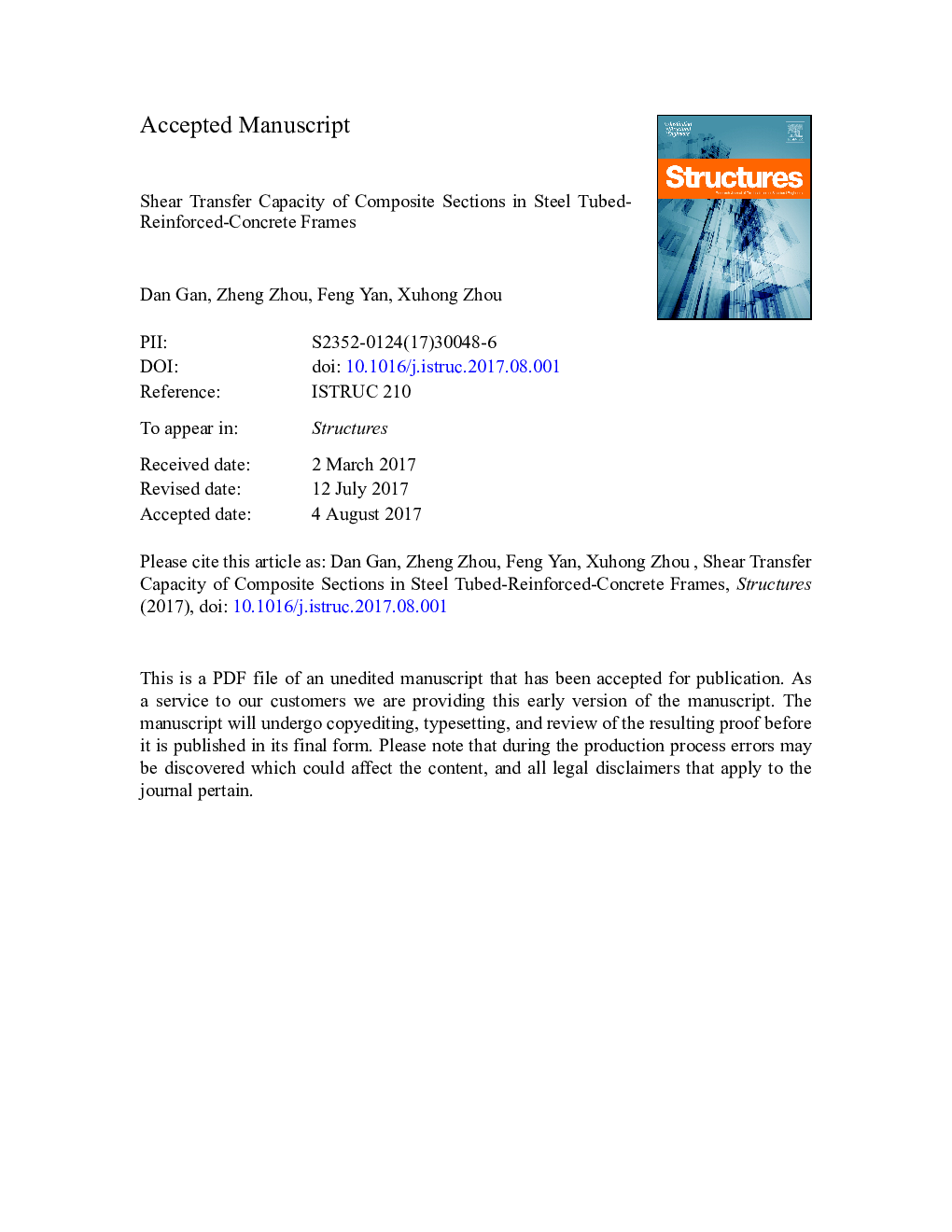| Article ID | Journal | Published Year | Pages | File Type |
|---|---|---|---|---|
| 4927847 | Structures | 2017 | 35 Pages |
Abstract
The tubed-reinforced-concrete (TRC) column is a particular type of concrete-filled steel tube (CFST) column, in which the encasing thin-walled steel tube is discontinuous in order to avoid the direct transfer of an axial load and to maximize the confinement effect from the steel tube. Five partially through RC beam-TRC column joints with rectangular openings on the tube were tested under monotonic load to investigate the failure mode and shear transfer capacity of the interface between the column and the beam (Section a-a). The primary parameters considered in the tests were the 1) shear span-depth ratio (λ = 0.5, 1.5) of the beam; 2) opening ratio (depth of openings to depth of the RC beam ξ = 0.5, 0.67); 3) welded re-bar on the tube in the joint zone. By comparing the predicted shear transfer capacities from four different design methods with test results from the TRC columns failing in diagonal shear in the literature, a method based on the shear strength components model is selected to calculate the shear transfer capacity of the composite section where the encasing steel tube is discontinuous (Section b-b). Based on the design method of Section b-b, experiment results and theoretical analyses, a revised shear strength components model is proposed. Moreover, a unified design formula, which could consider the effects of the opening ratios and the welded re-bars, is proposed in order to predict the shear transfer capacity of both Section a-a and Section b-b.
Related Topics
Physical Sciences and Engineering
Engineering
Civil and Structural Engineering
Authors
Dan Gan, Zheng Zhou, Feng Yan, Xuhong Zhou,
